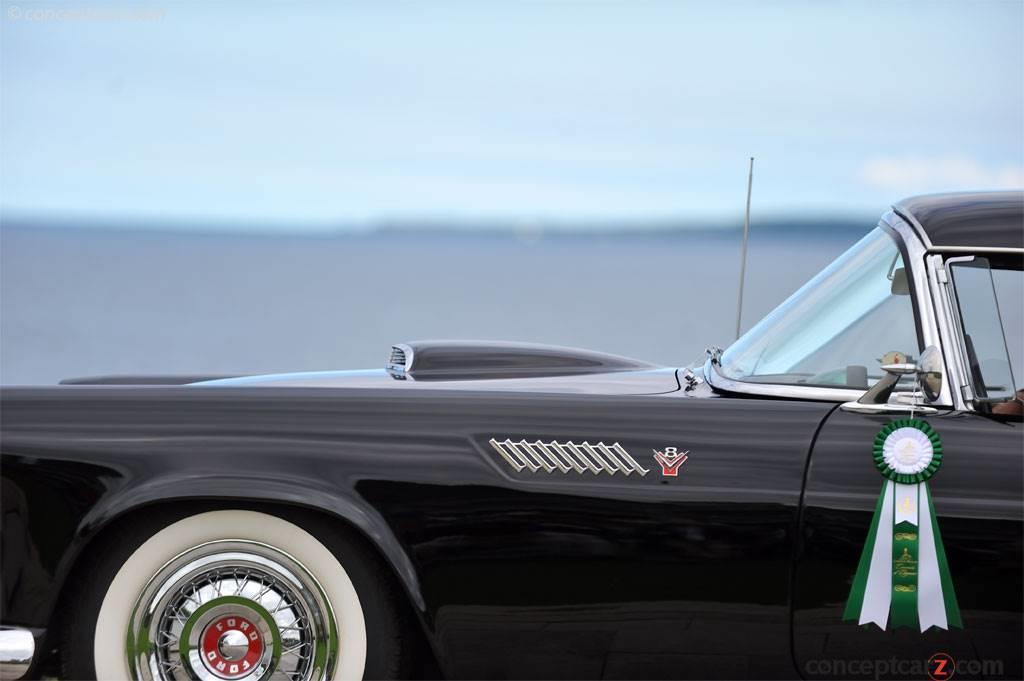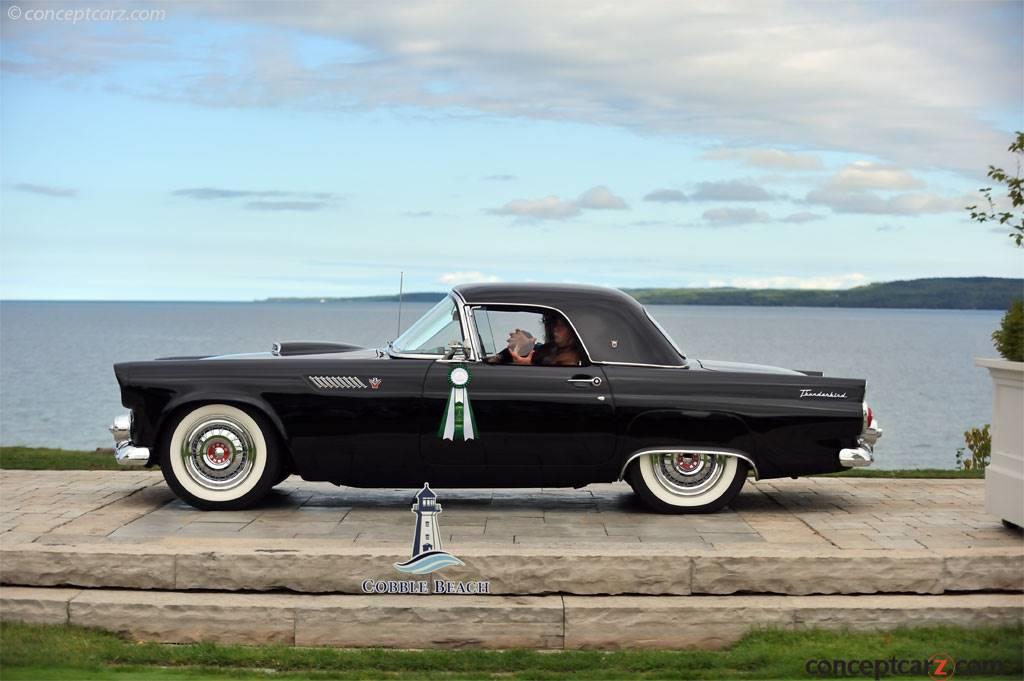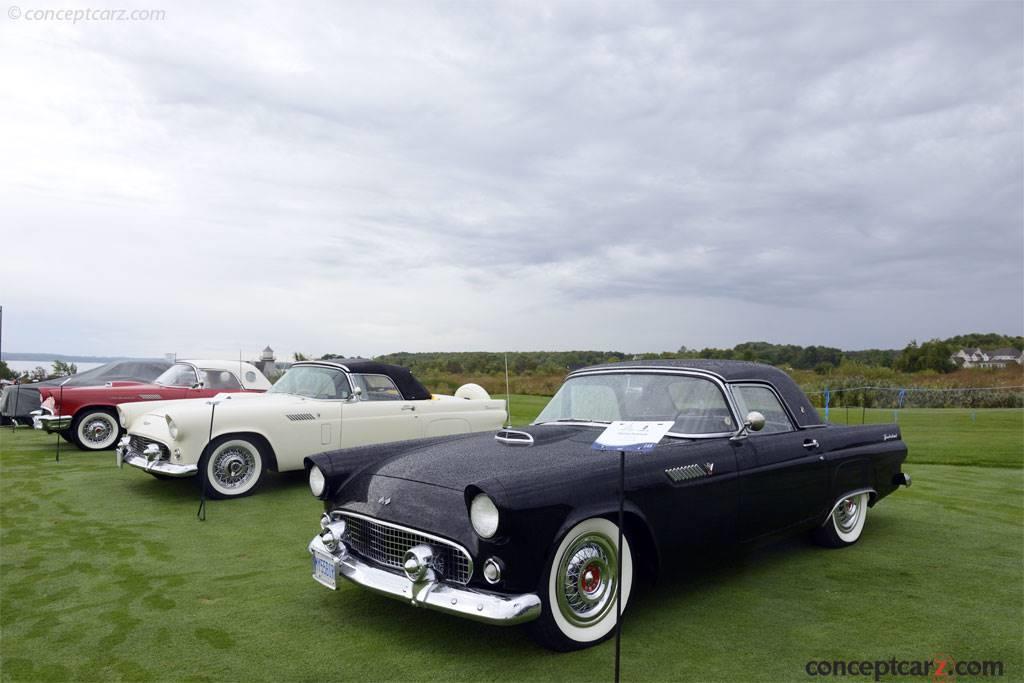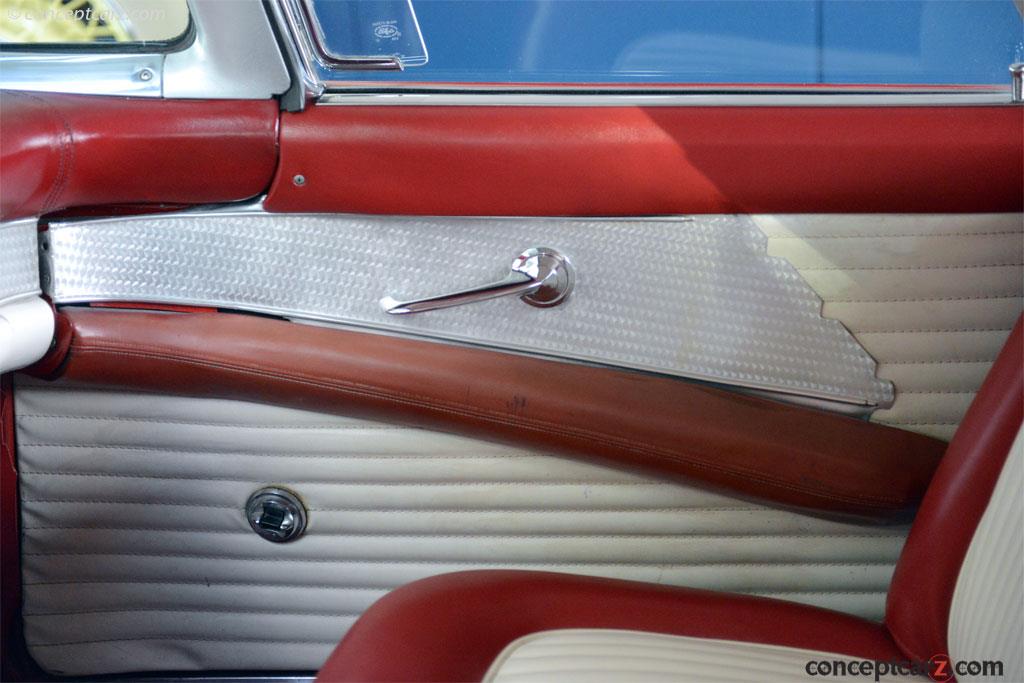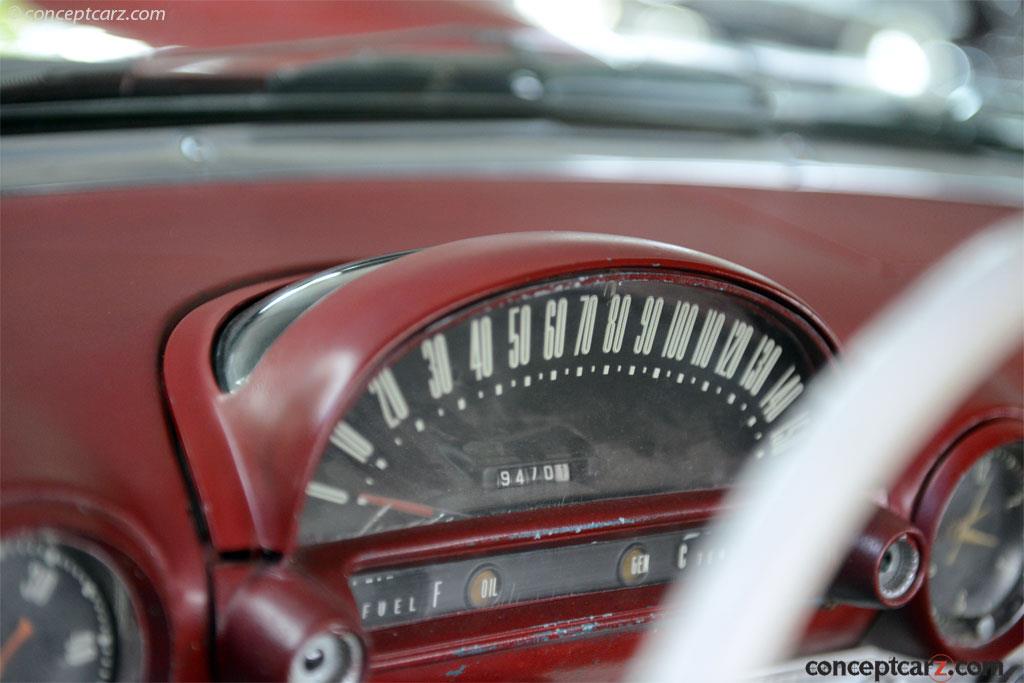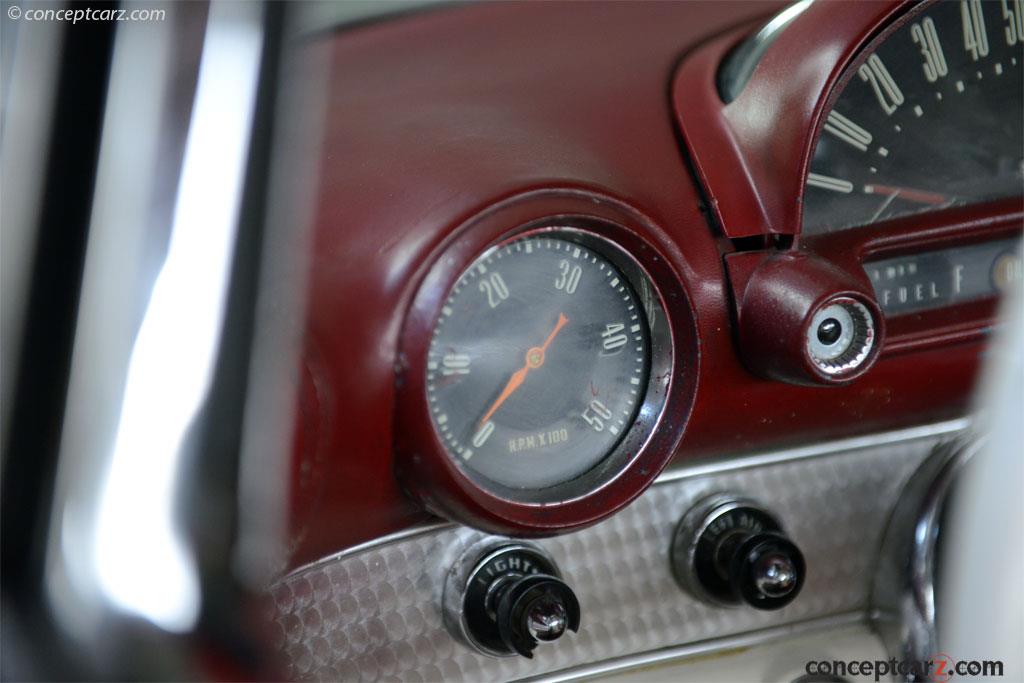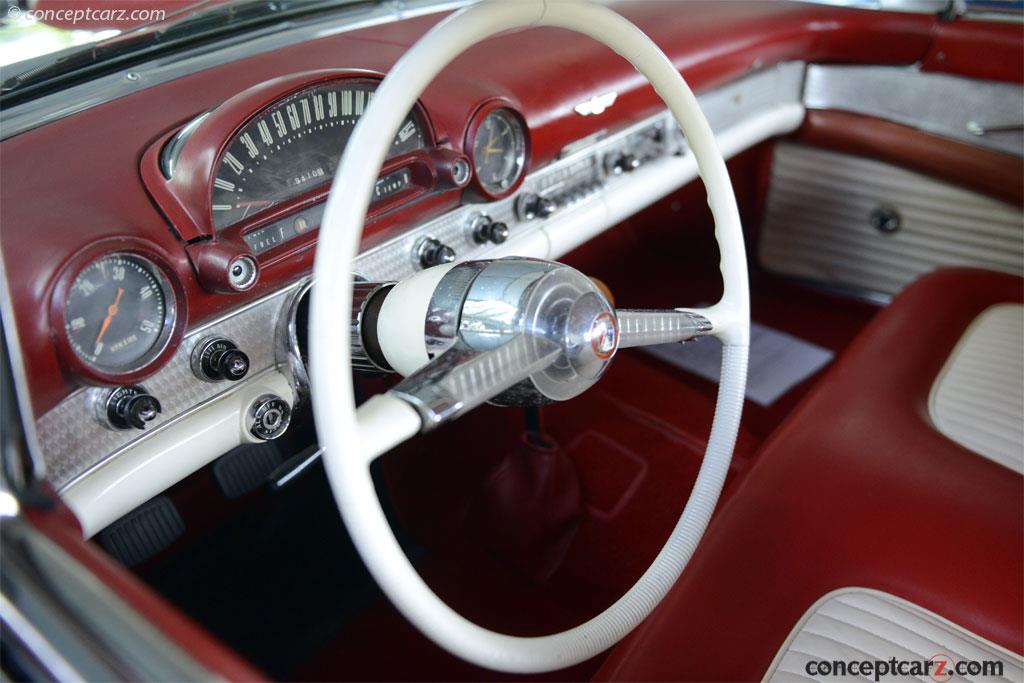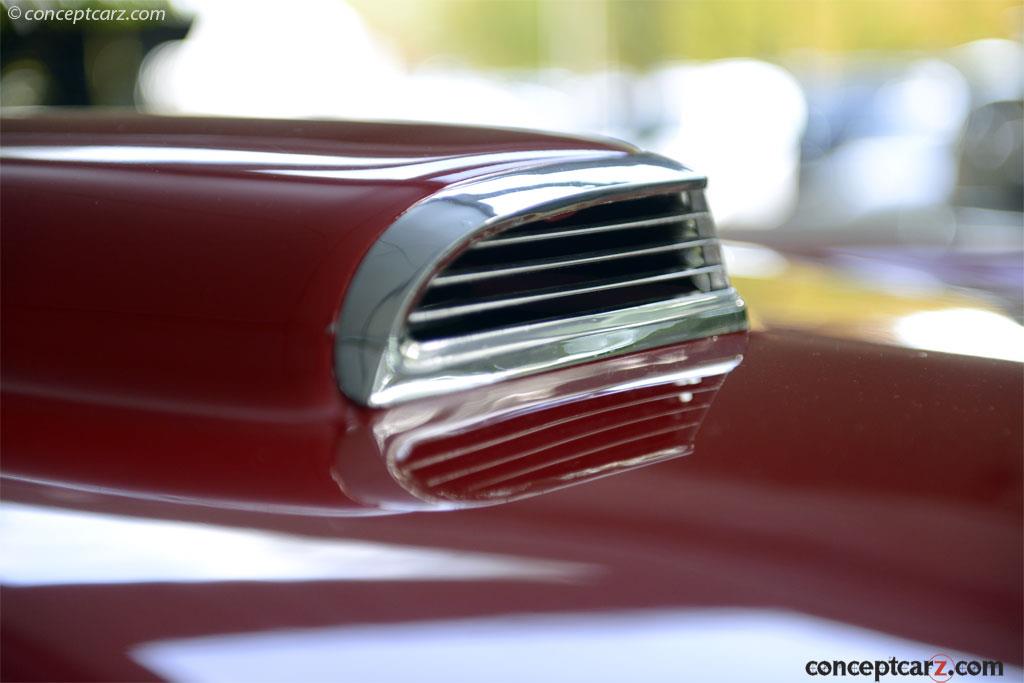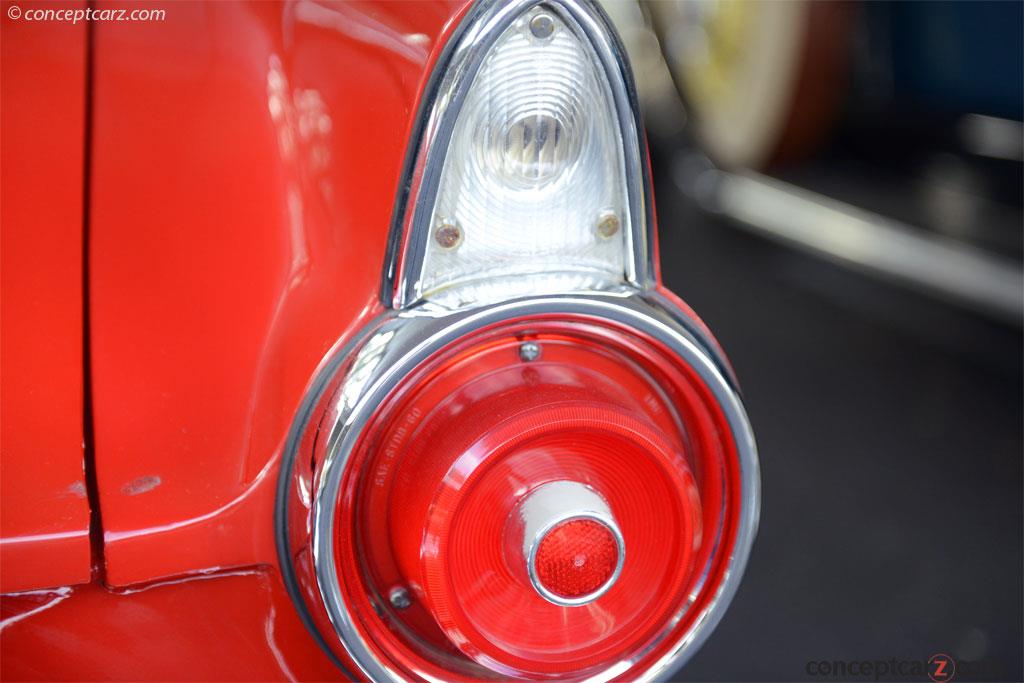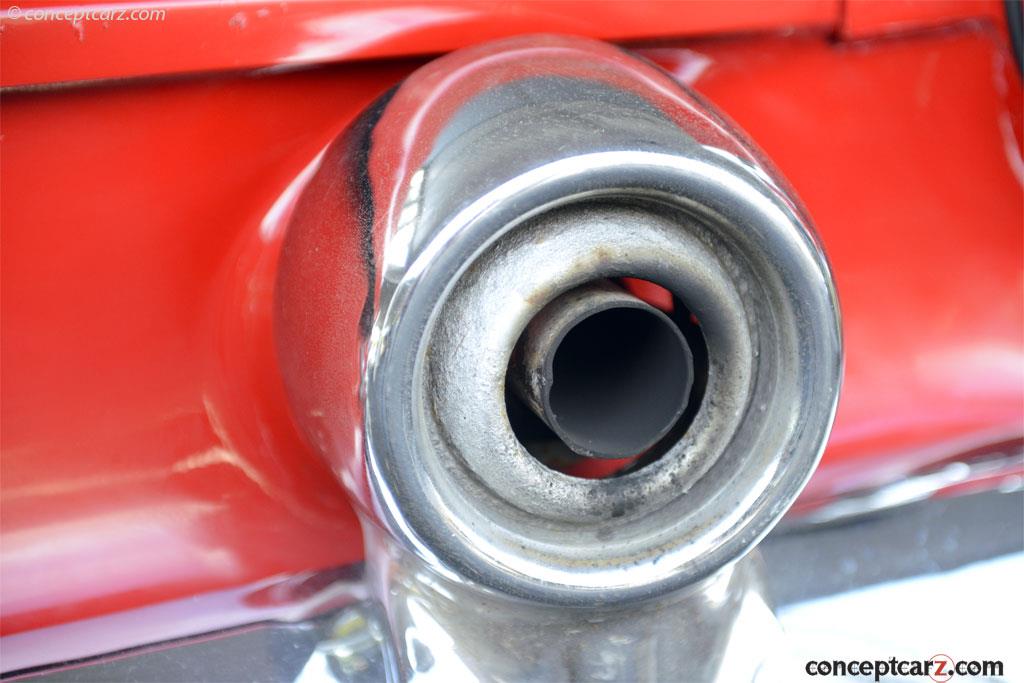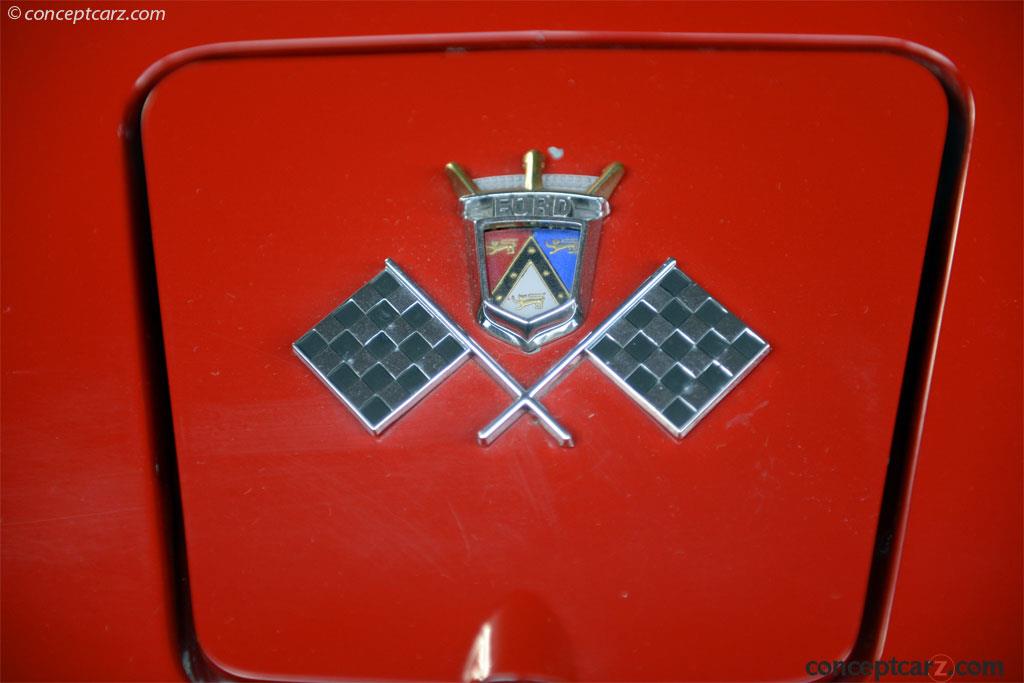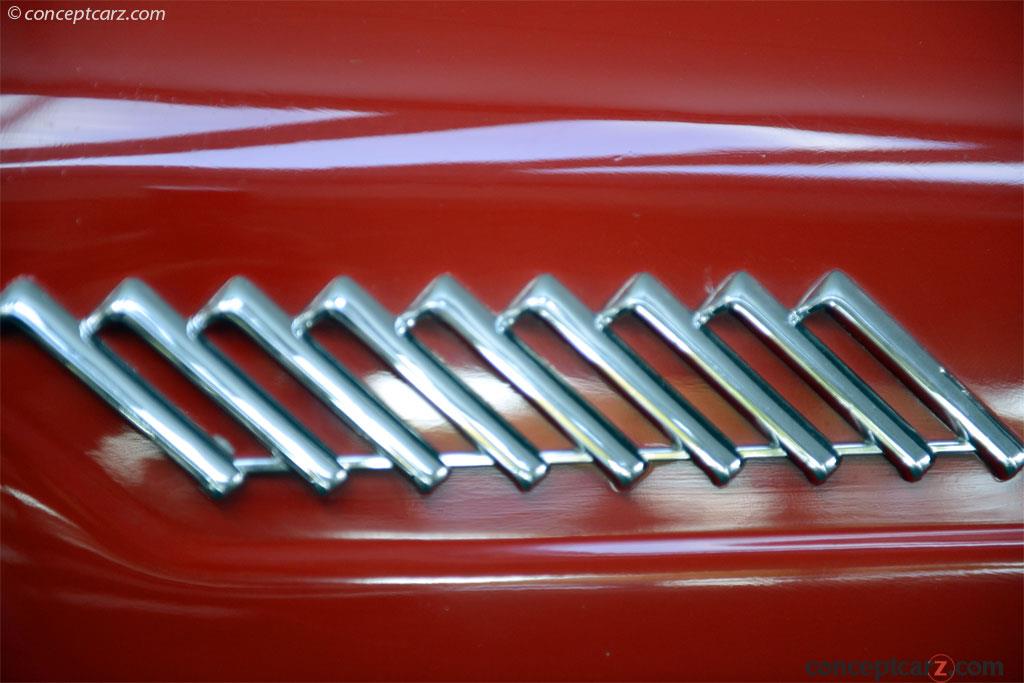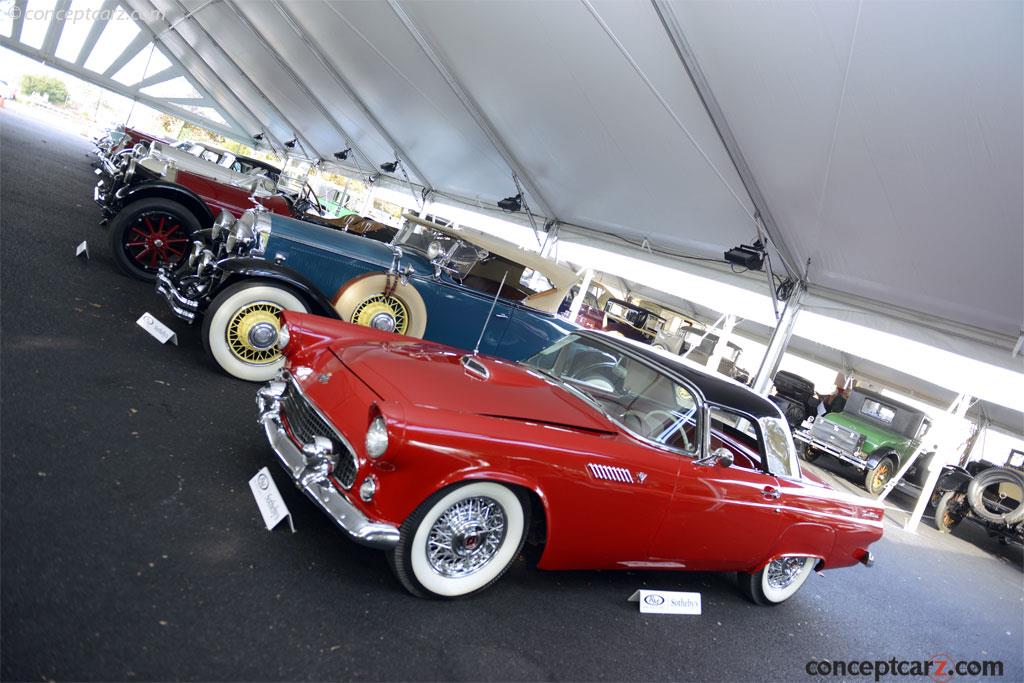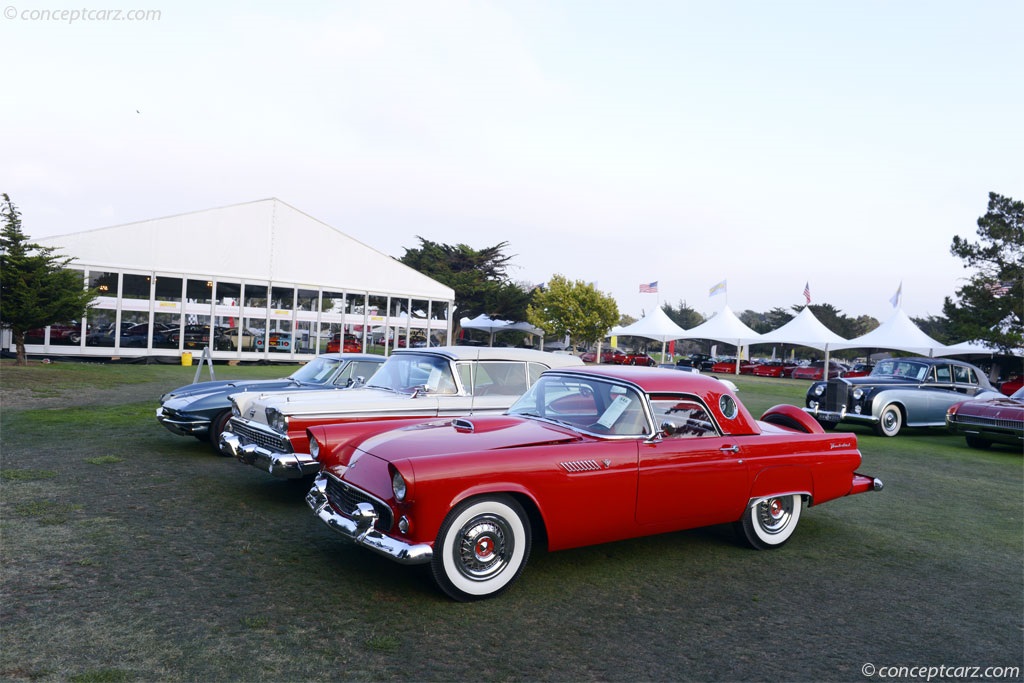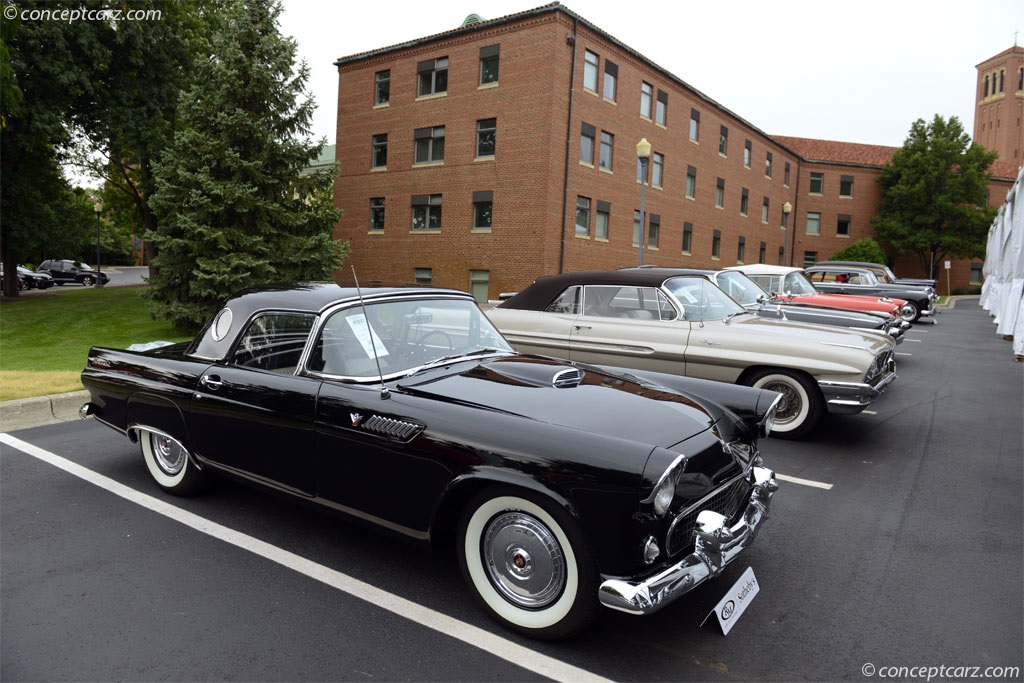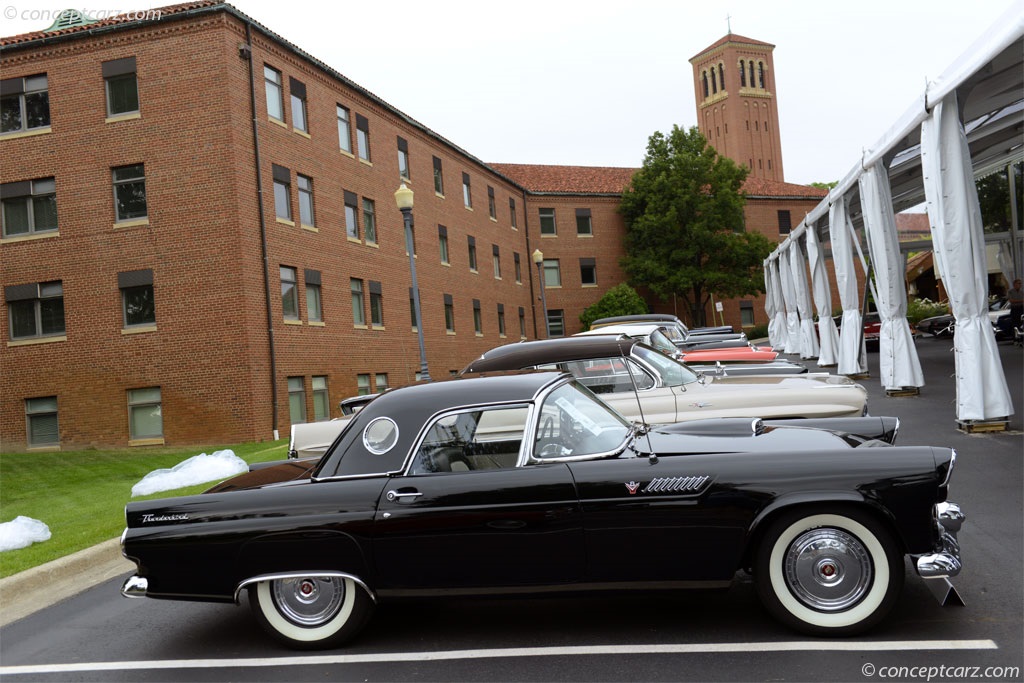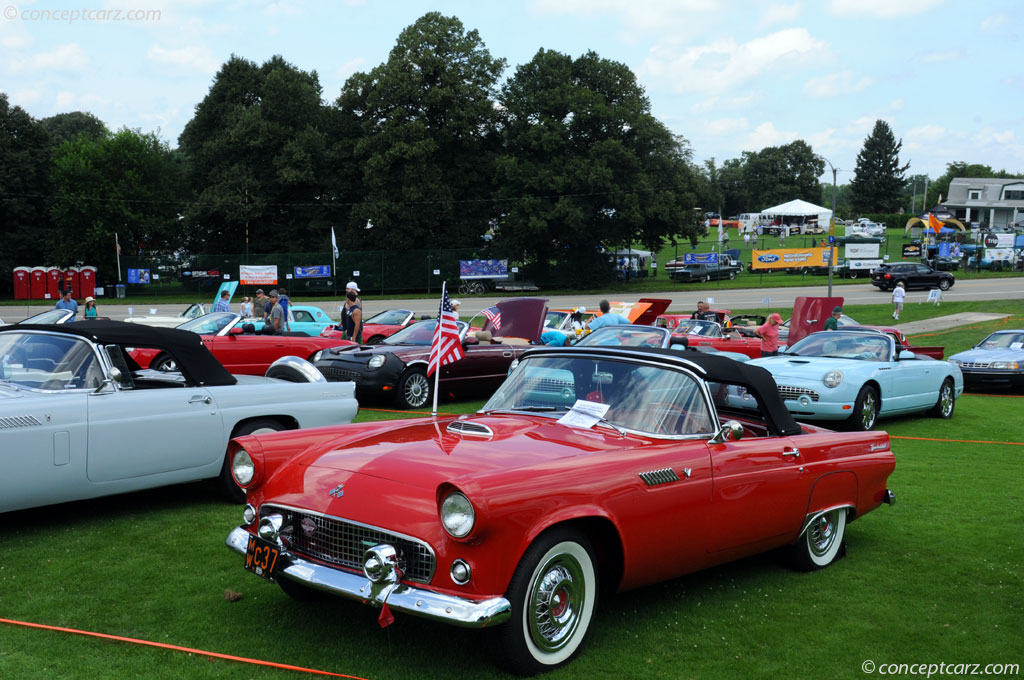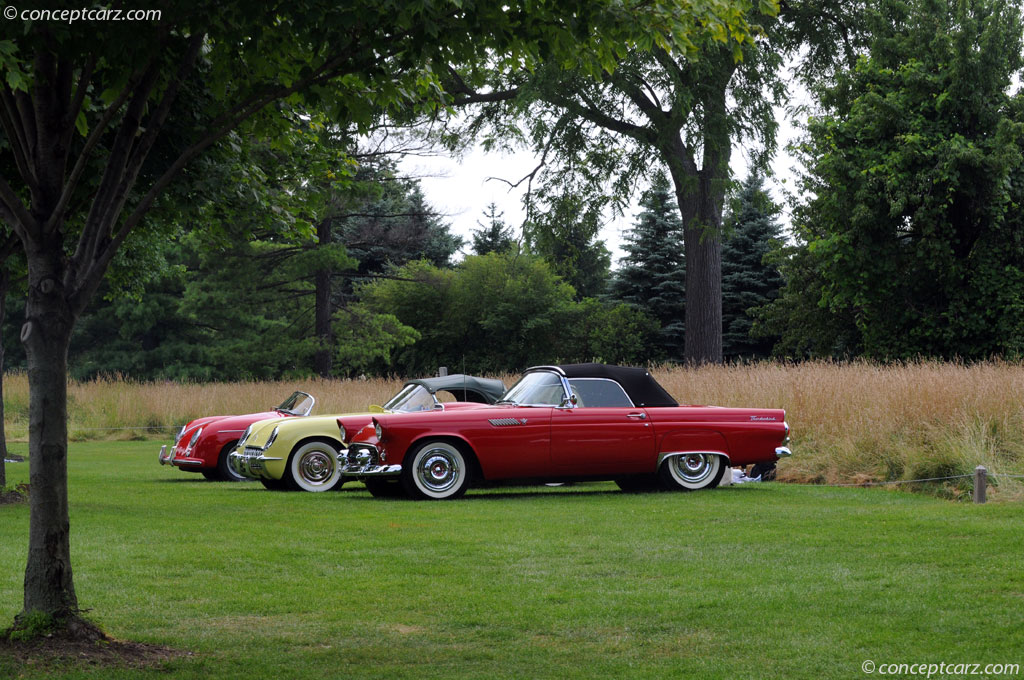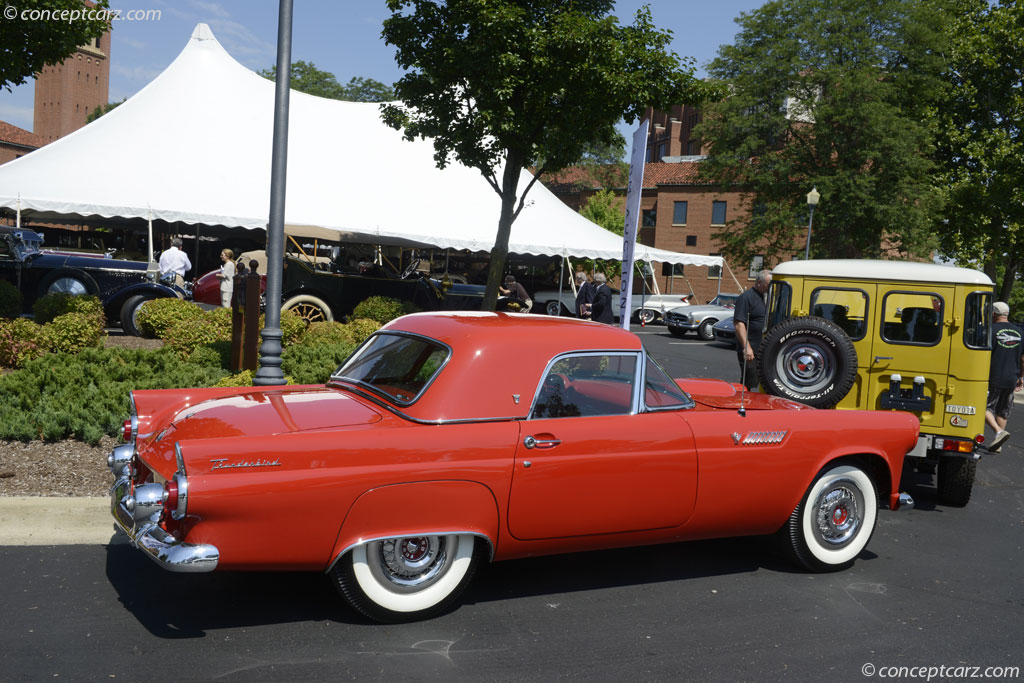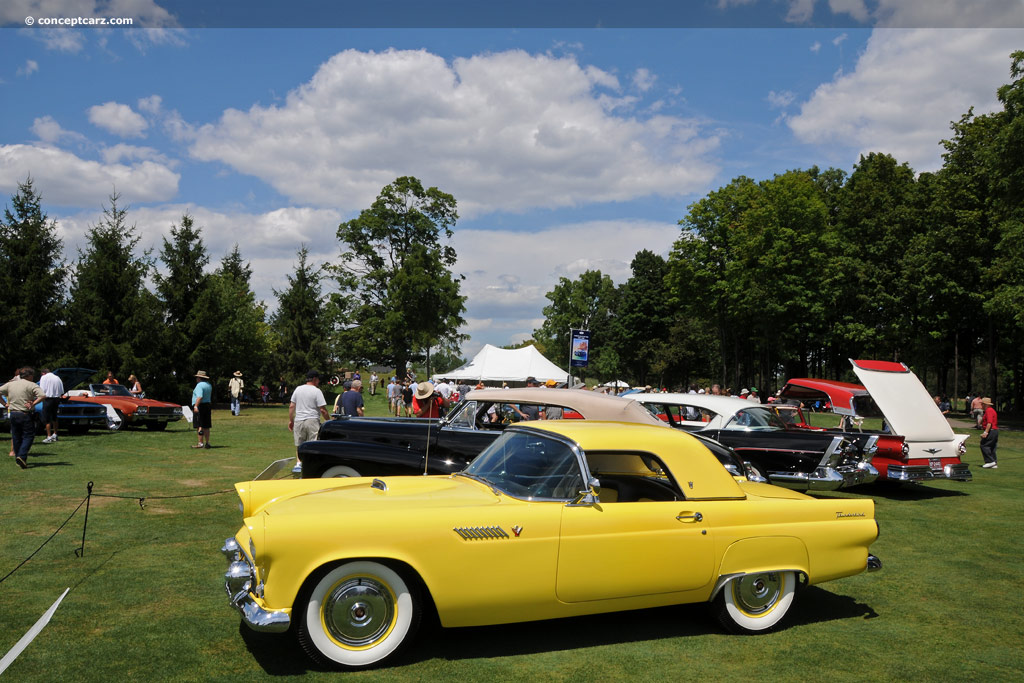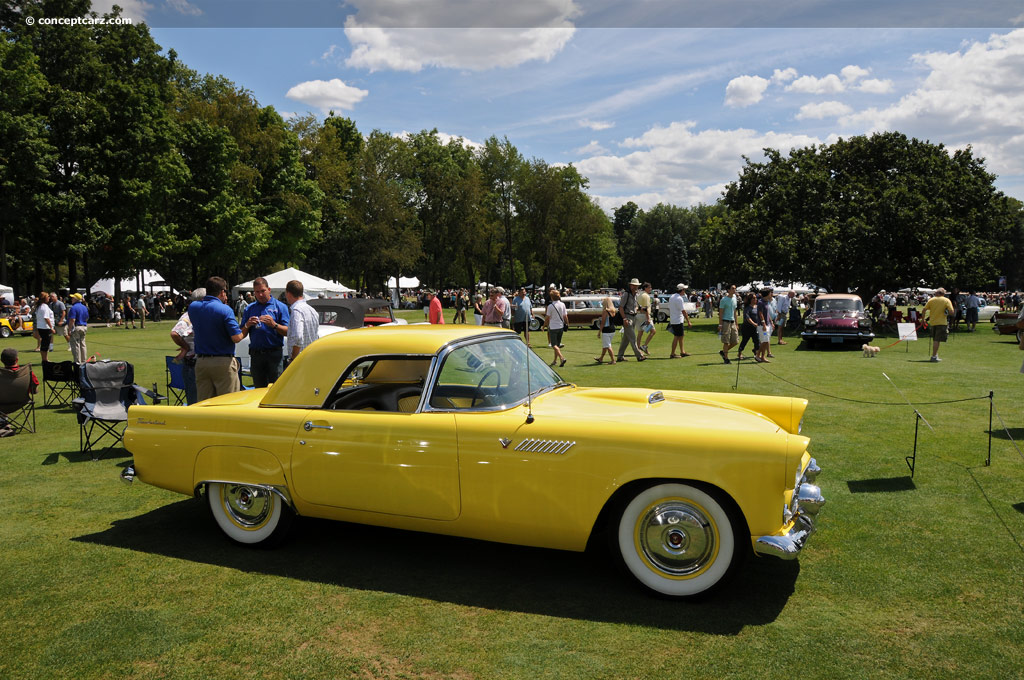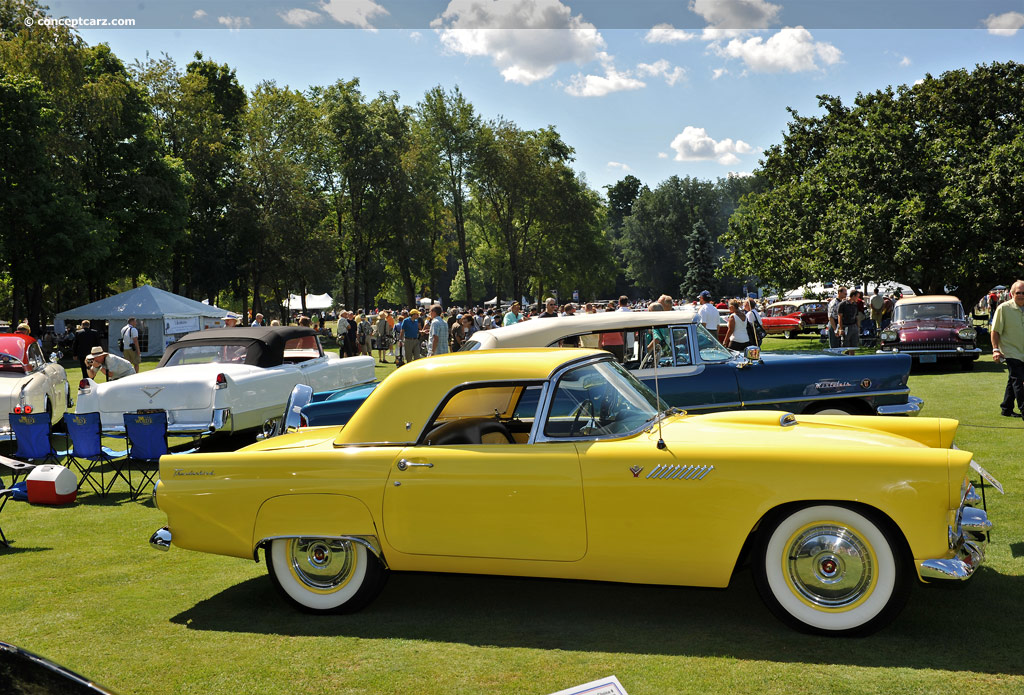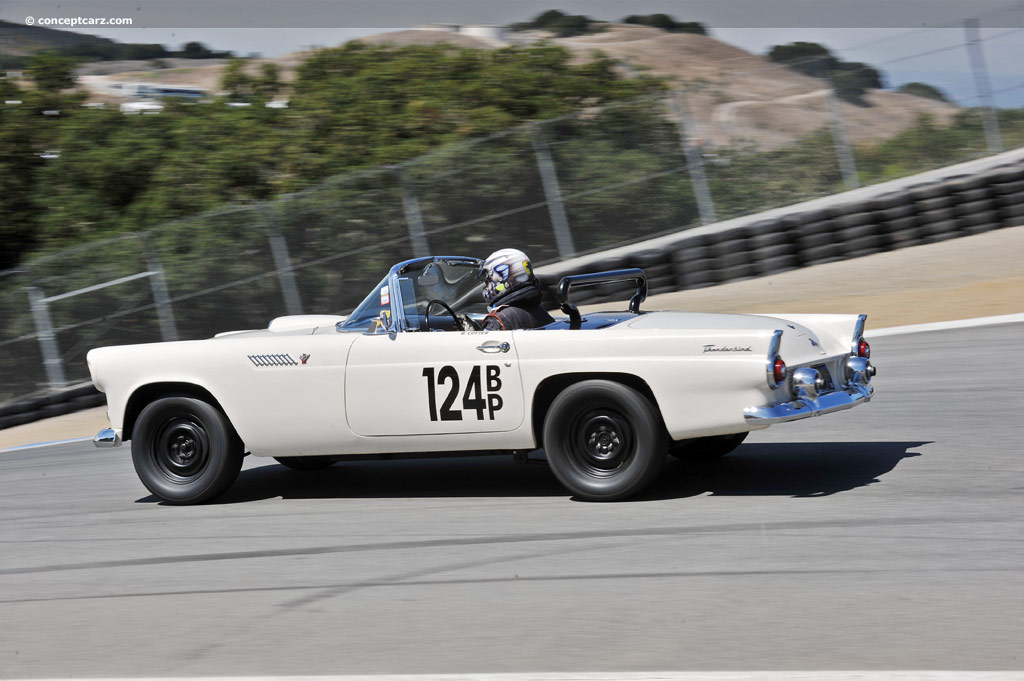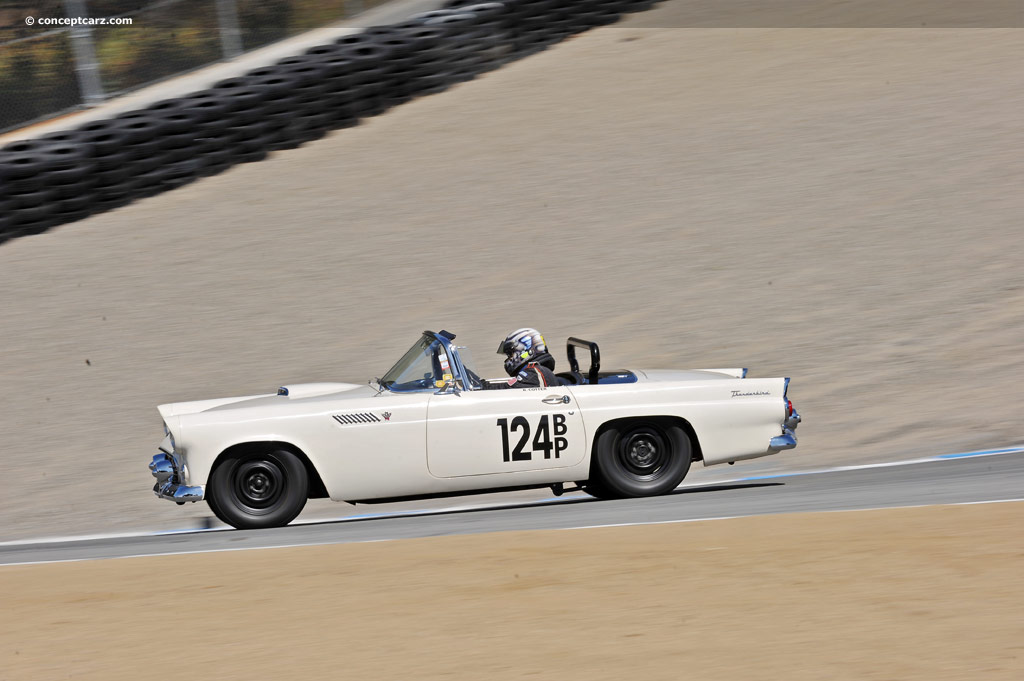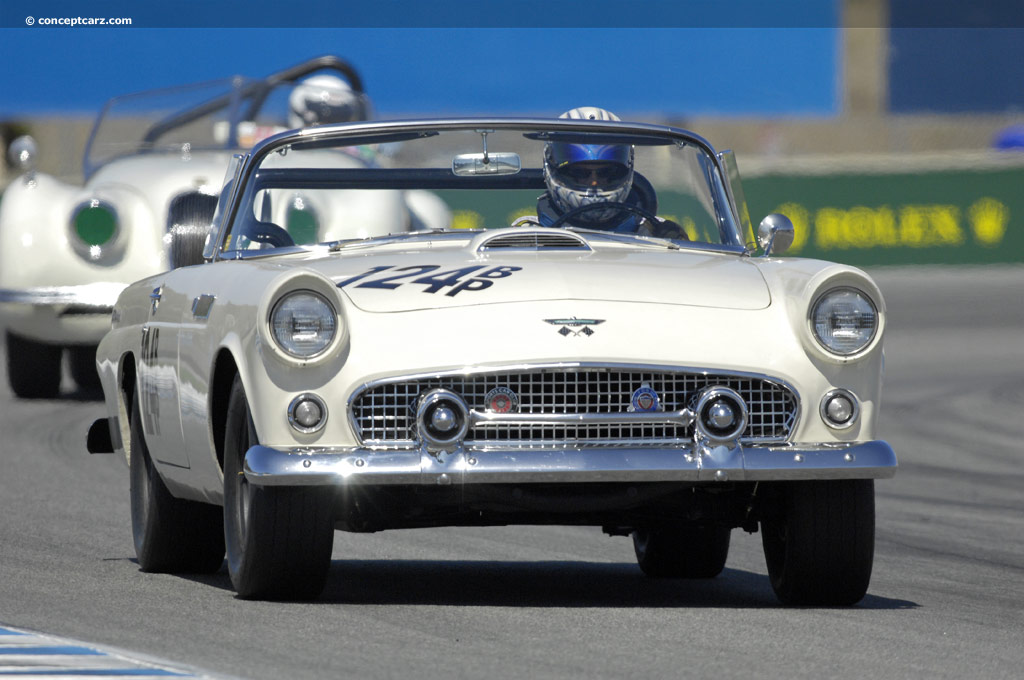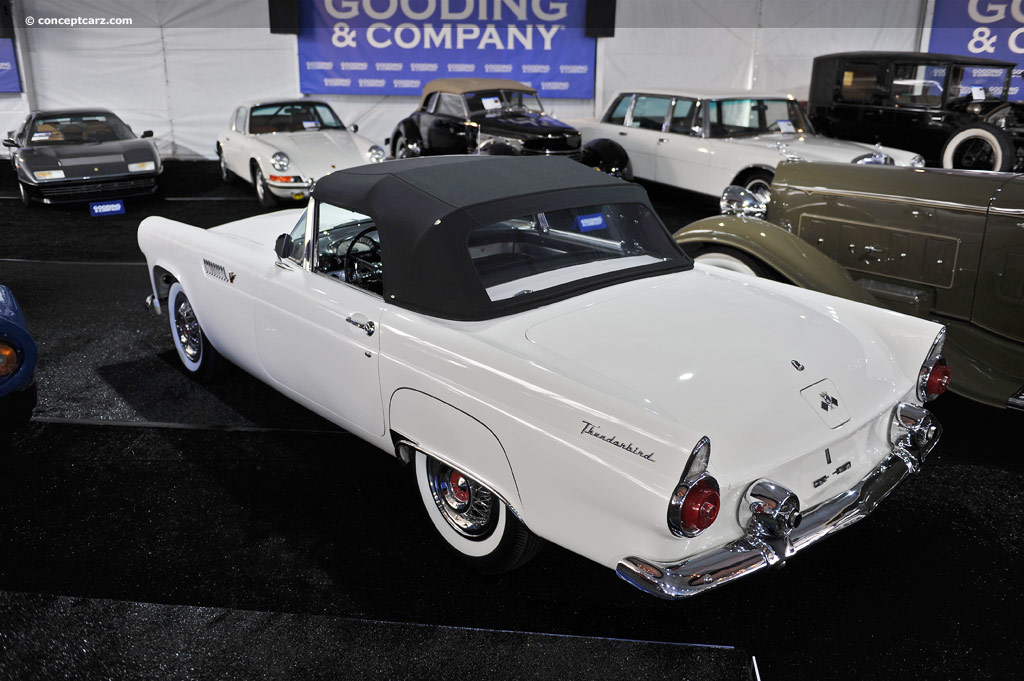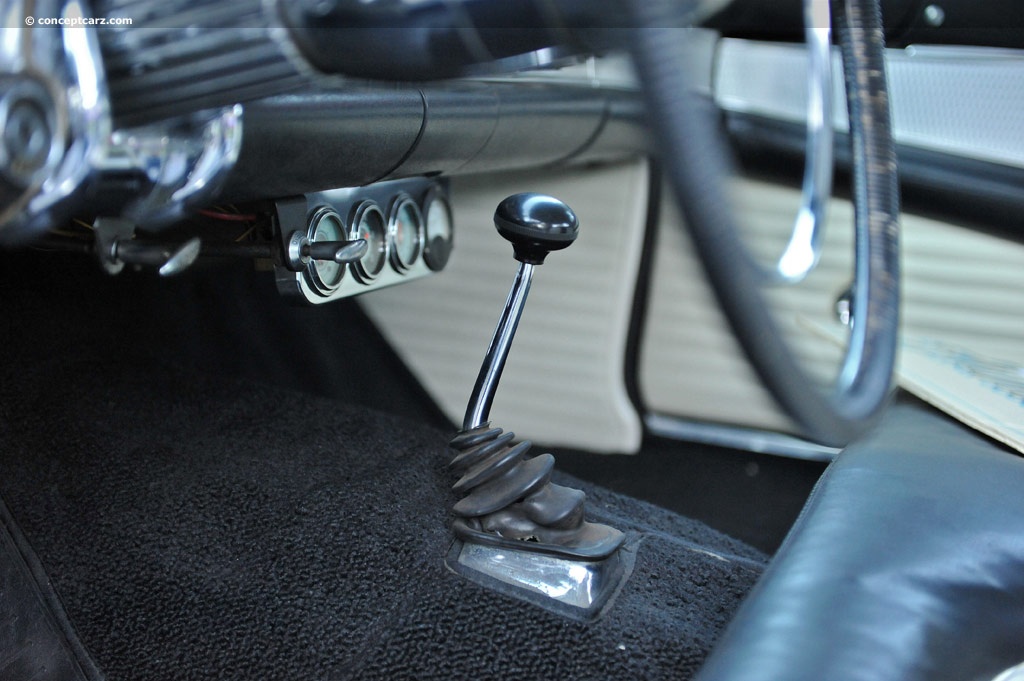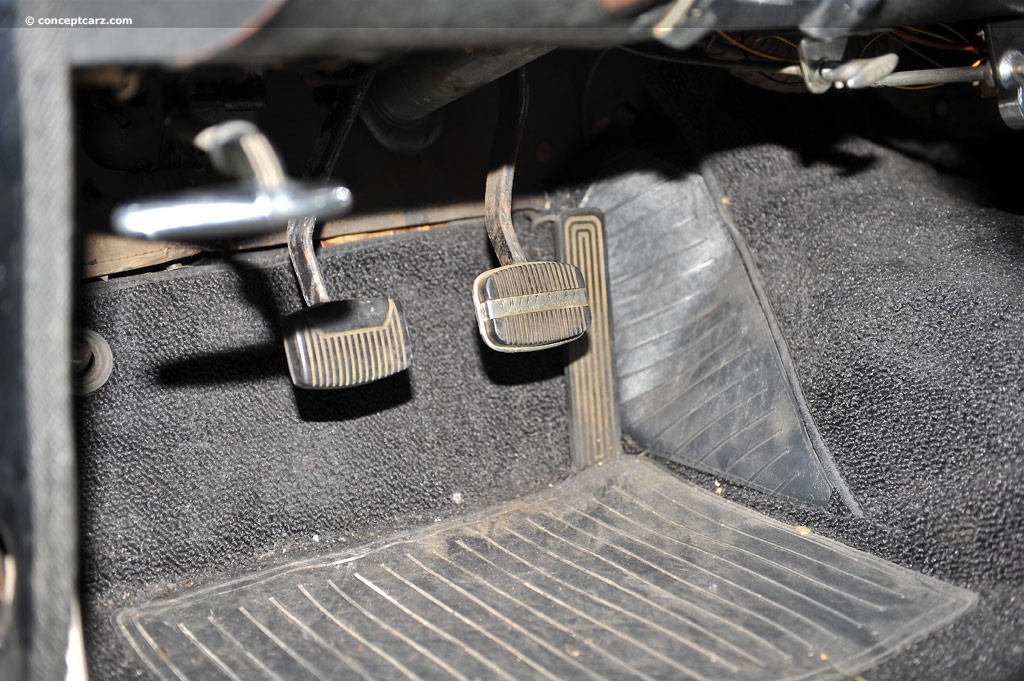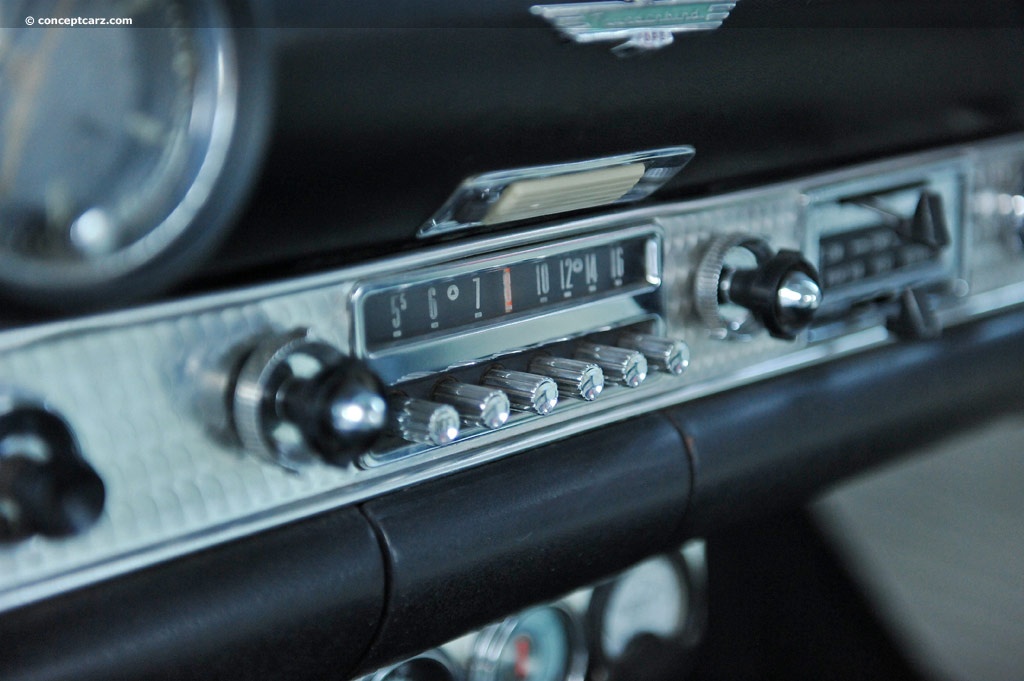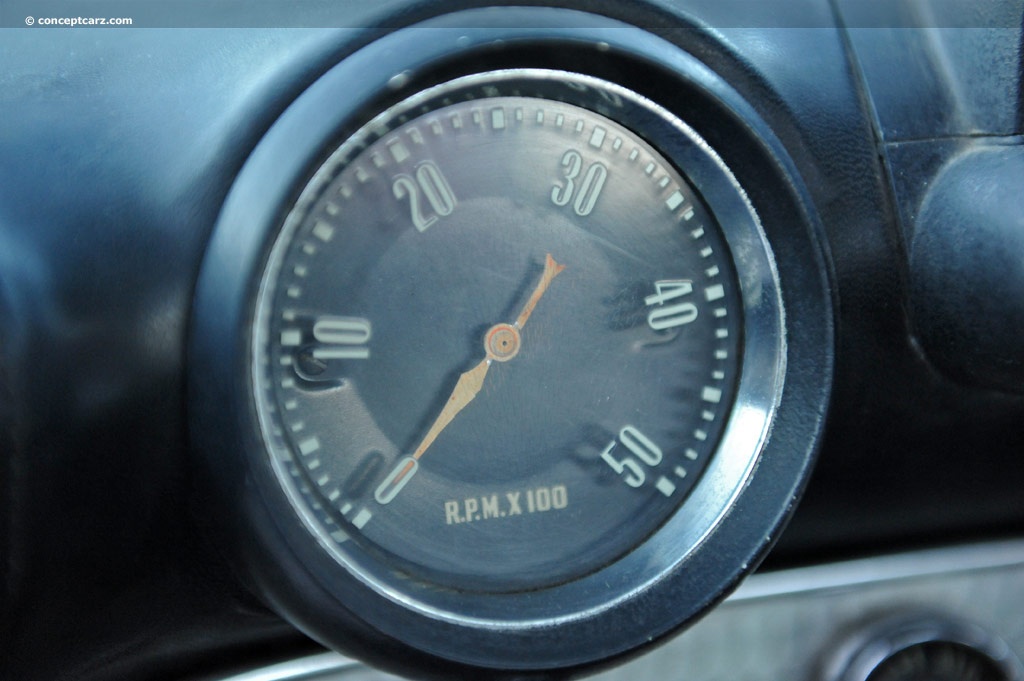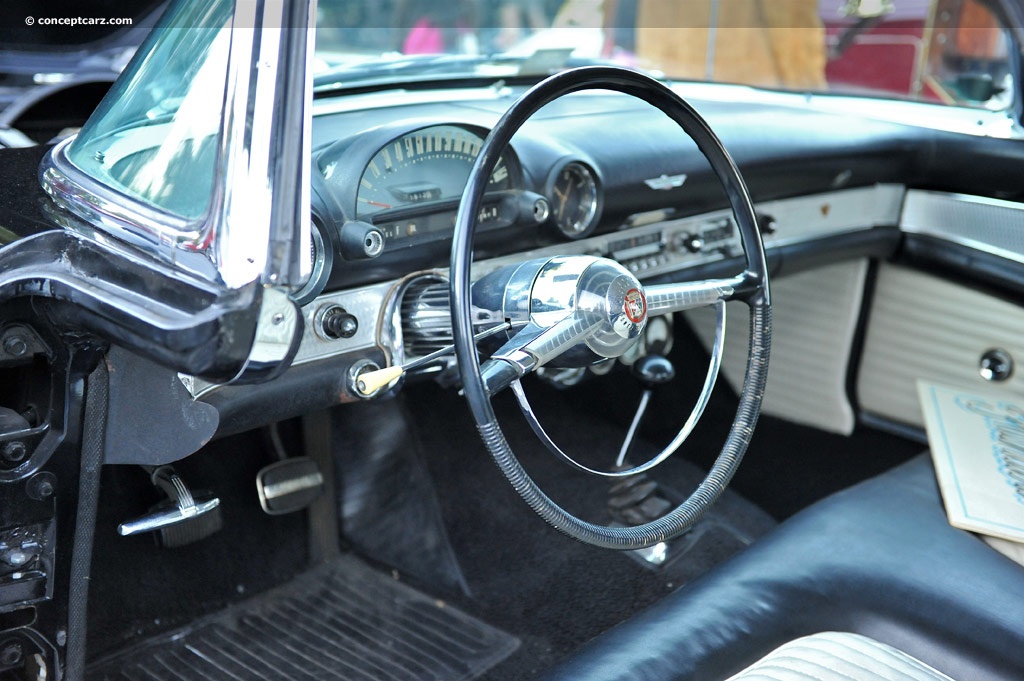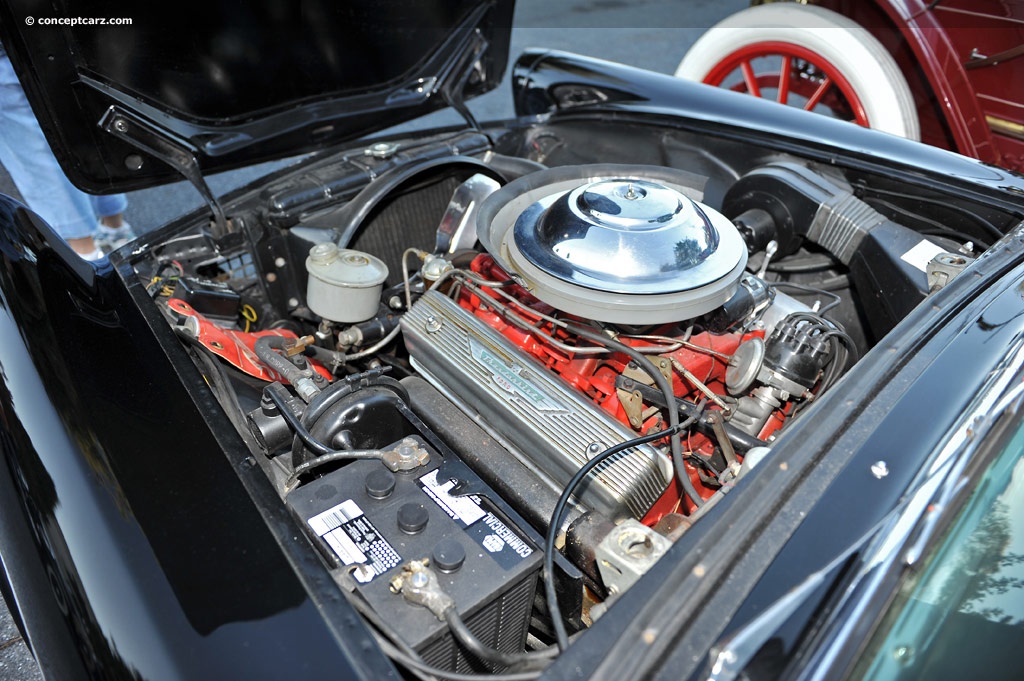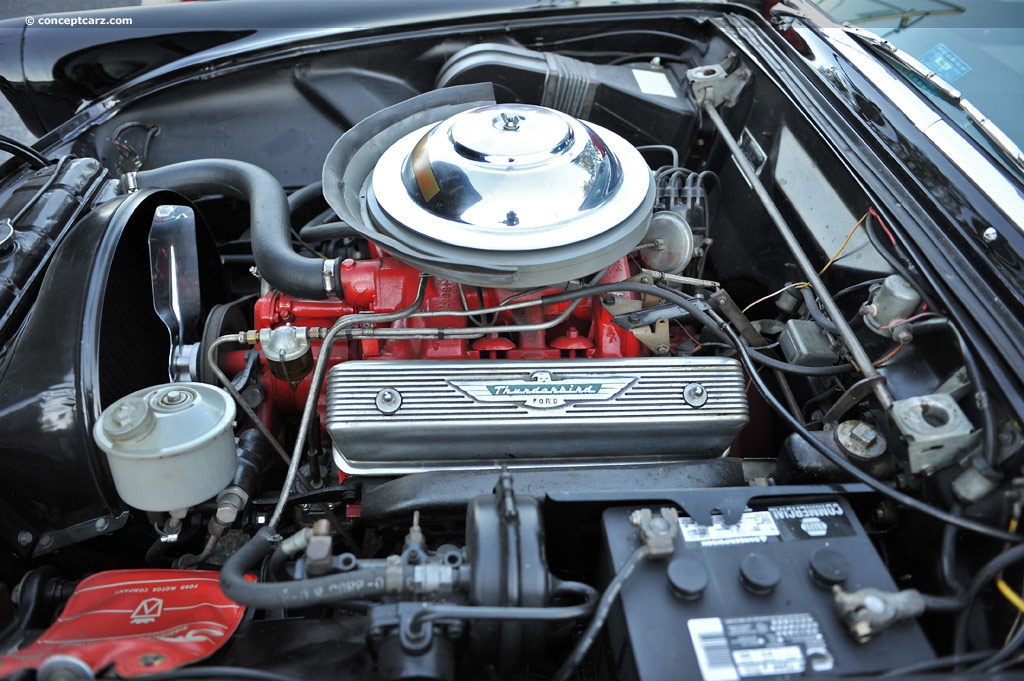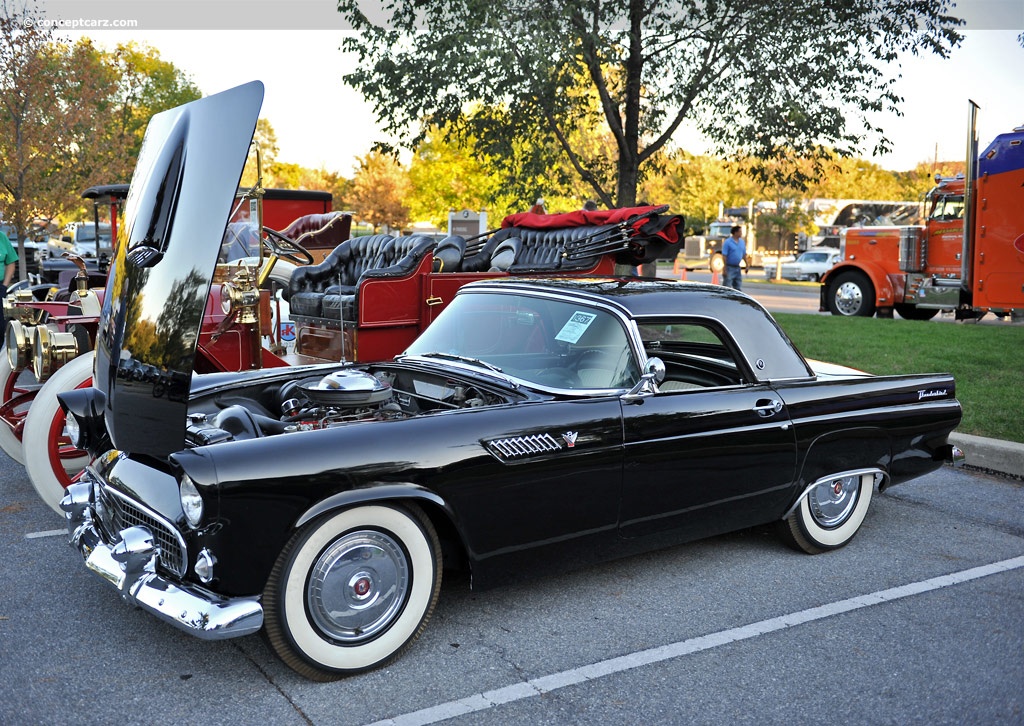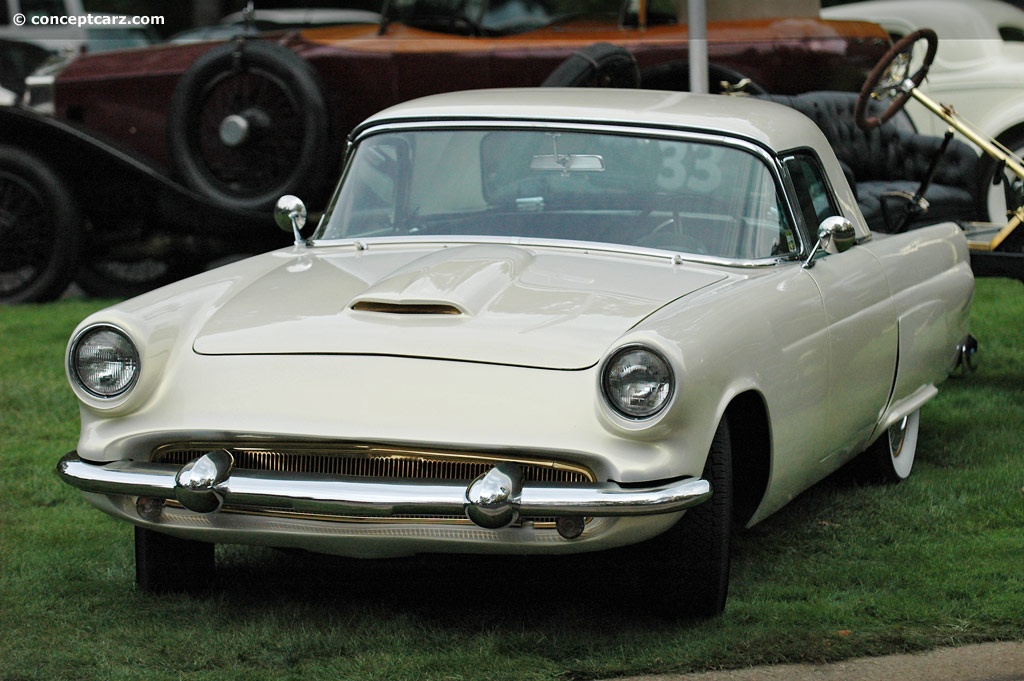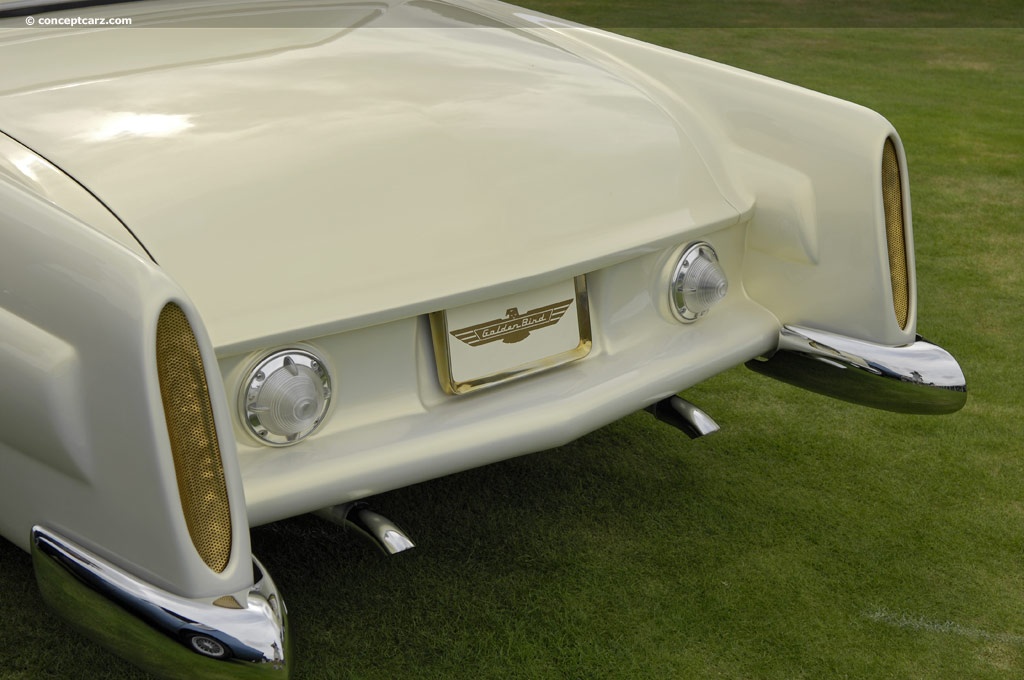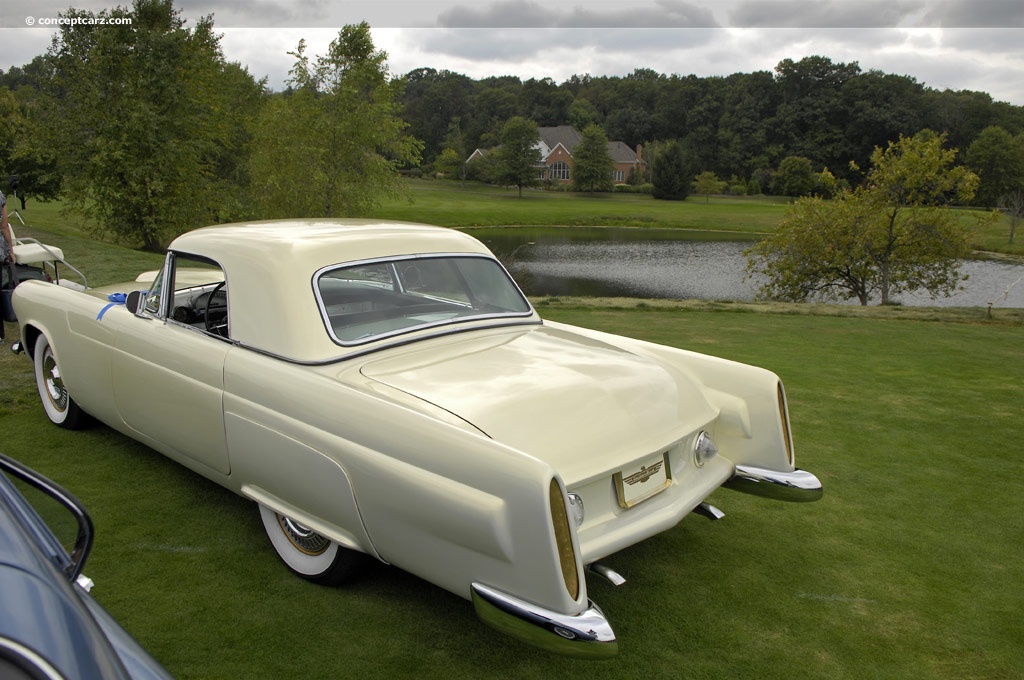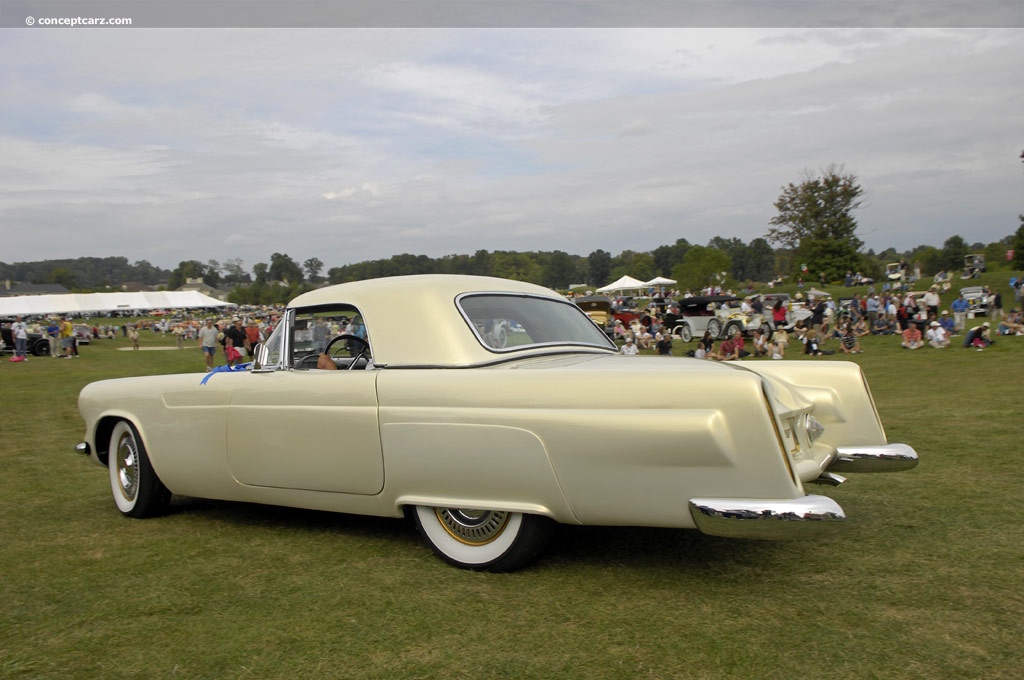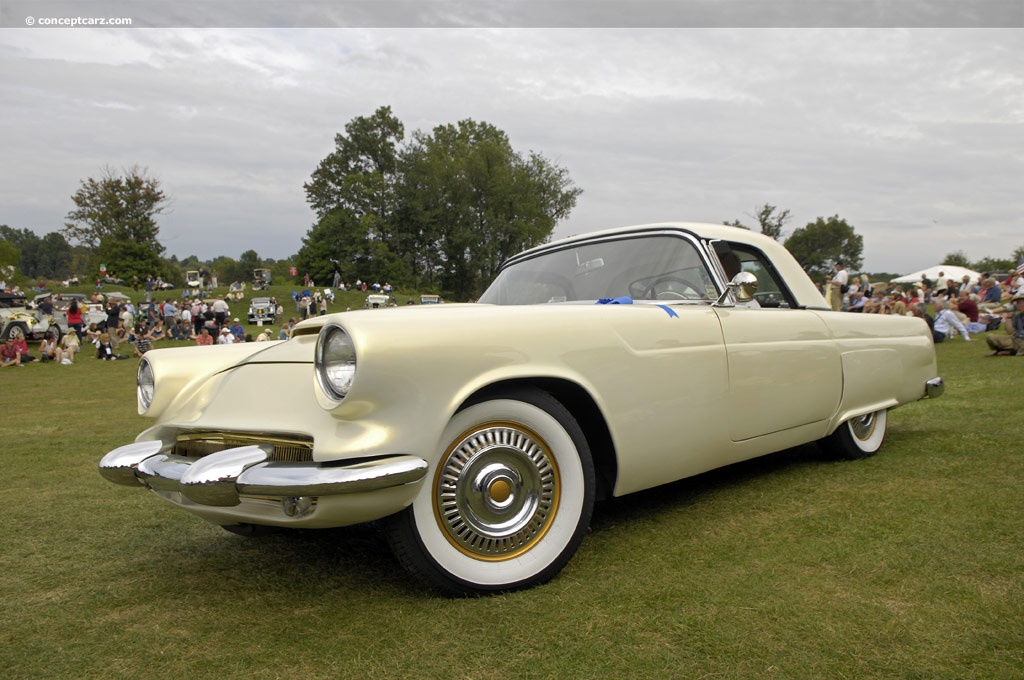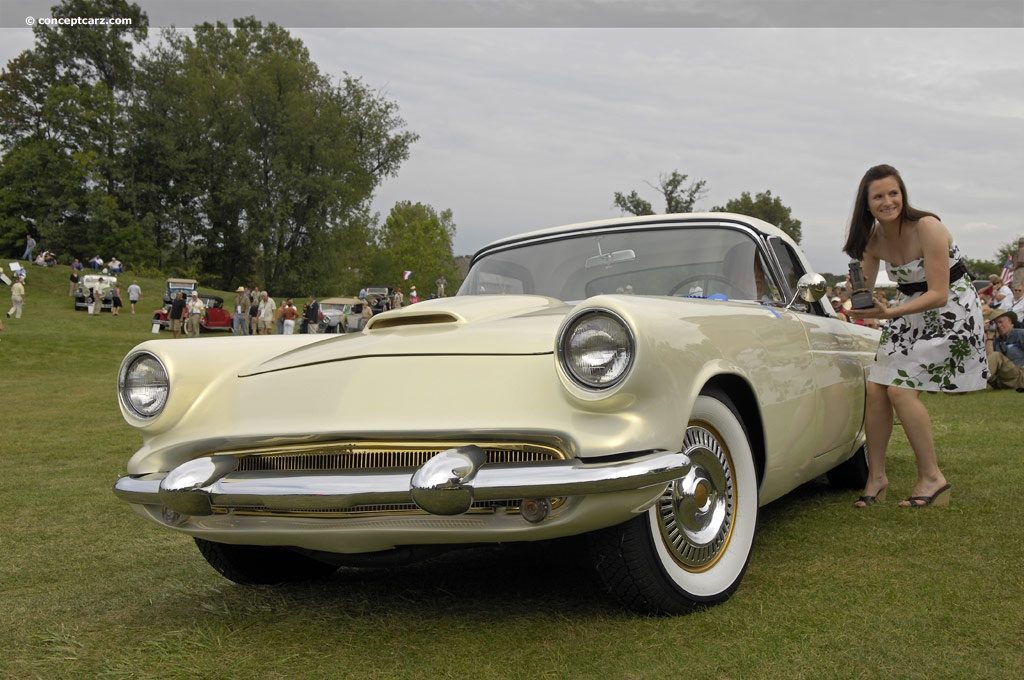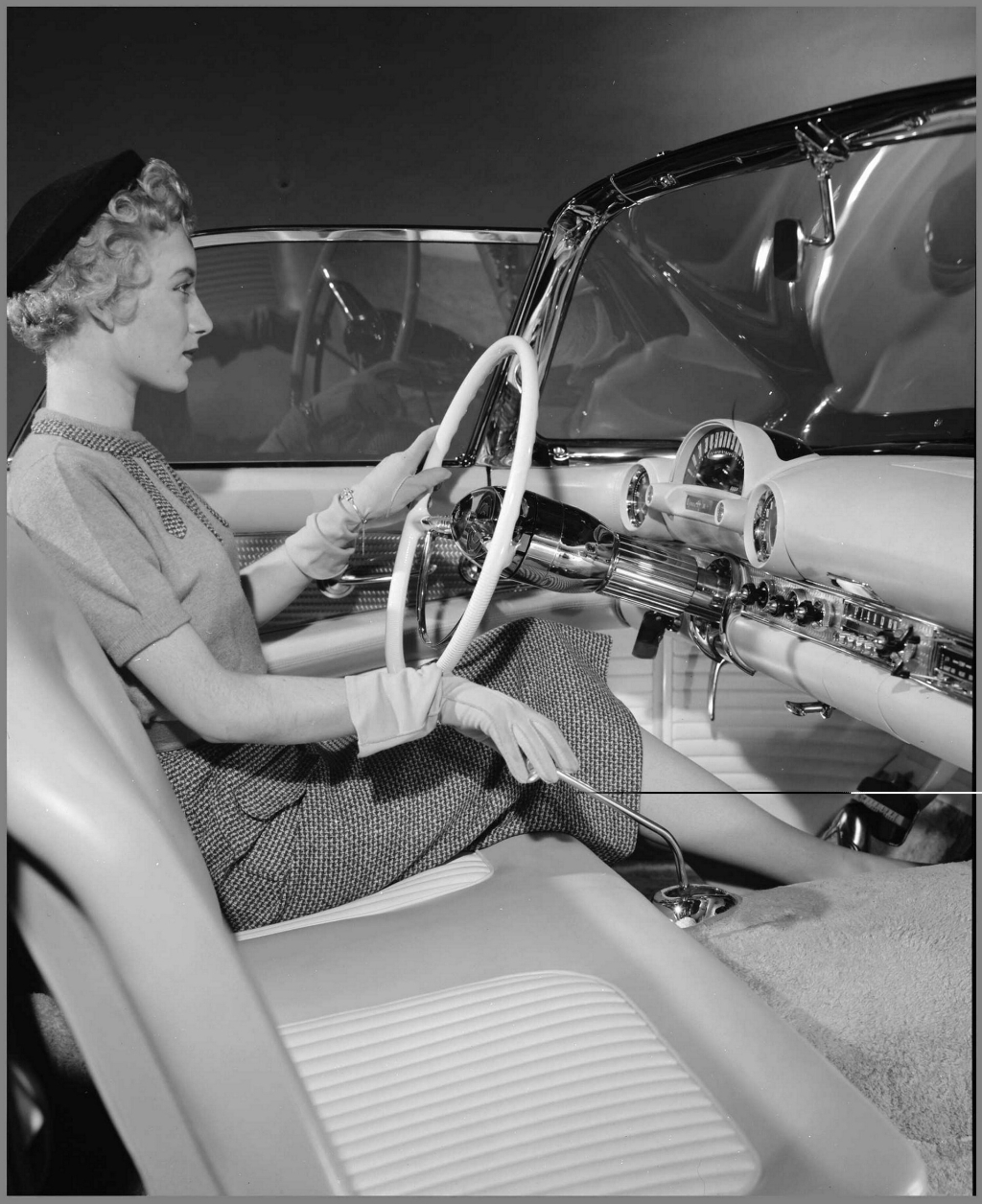In the early 1950s, a team of Ford Motor Company designers were tasked with designing a mass-produced two-seat sports car. Chevrolet beat them to the market when they introduced the Corvette at the Waldorf Astoria Motorama in January 1953.
The Ford Thunderbird was conceived as a challenger to Chevrolet’s Corvette sports car. It made its debut in 1954 at the Detroit Auto Show for the 1955 model year and was one of the first models to be given the company’s new overhead-valve V8 engine. For 1956, it had a 292 cubic-inch displacement and offered 200 horsepower, while the optional Special V8 displaced 312 cubic inches and produced 15 additional horsepower. When introduced, the Thunderbird was a two-seat ‘personal car’ that was designed to appeal to younger customers. It proved popular, beating the Corvette in sales, thanks in part to its superior V8 engine and refinement. 16,155 examples were sold in the first year (Chevy sold 700 Corvettes), a much higher figure than the 10,000 Ford had estimated. Over the three-year production run, sales exceeded 53,000.
The first production Thunderbird rolled off the line on September 9th of 1954, and the car was introduced to the public on October 22nd. Power steering, brakes, windows, and a four-way seat with options were all standard equipment. Additional standard items included the radio, heater, and a choice of a three-speed manual or Ford-O-Matic transmission. The options list included a removable hardtop that offered more weather protection than the side curtains and fold-down tops used in most other sports cars. With clean styling, low-slung body, V-8 power, and luxurious interior, the Thunderbird outpaced the sales fiberglass Corvette and its anemic six-cylinder engine.
The 1955 Ford Thunderbird was powered by an overhead-valve 292 CID engine with a Holley four-barrel carburetor and dual exhaust. Horsepower was rated at 193 hp. Two compression ratios were available including 8.1:1 and 8.5:1. The higher compression added five additional horsepower, while the lower was used for the manual transmission only. The manual transmission was standard and had a semi-centrifugal-type clutch and three-speed helical gears and synchronizers for second and third gears. Buyers had the option of selecting the overdrive and Ford-O-Matic automatic for an additional cost. Pricing for the 2-door convertible began at $2,950.
For 1956, the Ford ‘T-Bird’ was fundamentally unchanged except for mounting the rear wheel on the trunk and adding porthole windows to the hardtop. The Thunderbird would receive a more thorough restyling for 1957 which saw the adoption of prominent fins and a longer tail section. This added additional luggage space while enabling the spare wheel to be relocated into the trunk, which greatly enhanced the handling.
Despite the Thunderbird’s popularity and sales success, Ford would soon abandon the 2-seater concept in favor of a larger, and slower four-seat version introduced for 1958.
